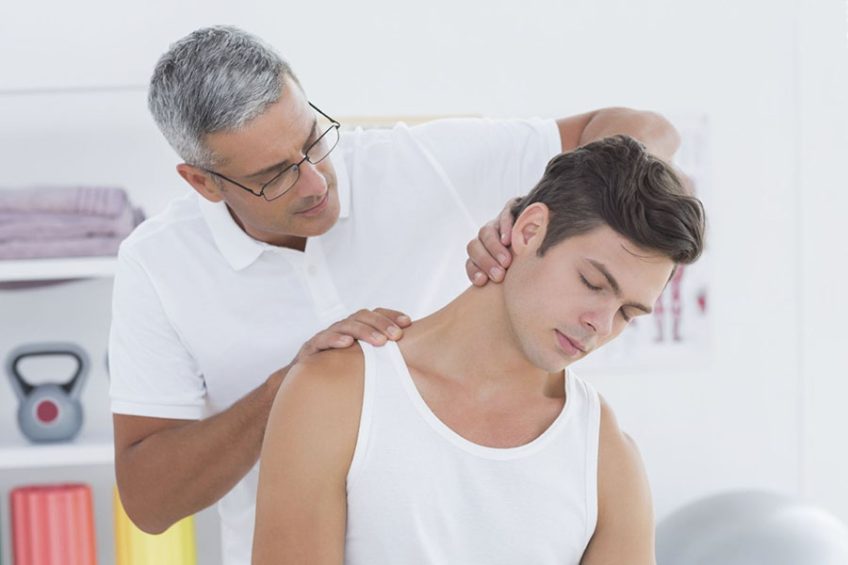Cervical pain is pain in the neck area that does not radiate to other areas of the body such as the shoulders or arms. This pain is not a serious health problem, but it can cause major discomfort so it should be treated properly.
Cervical pain, or neck pain, is the third most common pain, after headache and low back pain.
CONTENT:
What is neck pain?
Do you know that “stiff neck” feeling, sometimes accompanied by headaches, dizziness or nausea? You certainly know it, because it is the most common type of pain, after headaches and low back pain.
Well, that feeling you sometimes feel is actually acute or chronic neck pain and can seriously affect your quality of life.
Causes of cervical pain
The causes of neck pain are numerous, from mechanical overloads to infections / meningitis and vertebral tumors. But the most common are:
1. Damage to non-neural structures (overload pain);
2. Nerve compression (root pain);
3. Joint degeneration.
1. Overwork pain is the most common type of pain of all (85% of cases) and can develop in the context of:
- repetitive physical overload;
- prolonged vicious positions: keeping the head and neck bent forward, sideways or posteriorly for a long time, due to reading, watching TV or working at the computer;
- adopting an incorrect resting position during the night, in particular a very soft bed or an improper pillow, which induce awkward positions of the spine;
- mental tension, followed by the accumulation of muscle tension in the neck area;
- intense physical exertion through activities that require keeping the hands above the head, such as painting or
- lifting weights above the head.
Most often, the pain can disrupt sleep and may be accompanied by dizziness, headache or nausea. At other times, it may radiate to the shoulders, shoulder blades or occipitals.
The most common is in people who work in the office without a armrest or in which the keyboard they use is placed incorrectly. In general, it occurs frequently in people who demand a lot of arms and shoulders.
2. Root pain occurs due to mechanical or biochemical injury to the nerve roots of the nerves.
The most common cause is a herniated disc, followed by cervical spondylosis. Disc herniation is manifested by intense neck pain followed by brutal irradiation of pain along an upper limb, which may be accompanied by some degree of muscle weakness and tingling in the hands.
In the case of cervical spondylosis, the onset of pain usually occurs progressively, requiring further investigation to differentiate them.
3. Pain of joint origin
Because they are frequently strained and subjected to repeated microtrauma or even severe trauma, intervertebral joints can also be the cause of chronic neck pain. In general, in the case of this type of pain, the maximum painful area can be located precisely near the cervical joints.
Regardless of the way the pain appears, of the triggering factors and of its appearance and severity, it is necessary to present it to the doctor, in order to identify its origin and to make the differential diagnosis with other causes of infectious, tumor, etc. nature.
Treatment of cervical pain
After the specialist establishes the cause of the pain, the initial objective is to reduce it, by:
- use of analgesics and anti-inflammatory drugs, muscle relaxants:
- massage, thermo-cryotherapy procedures;
- analgesic electrotherapy, TENS type, laser therapy;
- TECAR therapy brings important benefits in neck pain. It contributes through vasodilation to the reduction of pain, muscle relaxation, activation of local self-healing processes. It has the advantage of being used in parallel with mechanical stimulation through massage or exercise.
Wearing a soft cervical collar to stabilize the neck can be beneficial in the first 72 hours of acute neck pain. In the case of root pain, it is necessary to avoid all daily activities that aggravate the pain.
Persistence and worsening of motor deficit is a surgical indication.
Cortisone infiltrations may be helpful in relieving symptoms of arthritic neck pain.
After the acute pain has been removed, treatment should be continued with physical therapy to:
- softening of the paravertebral muscles;
- stabilization of the cervical spine, by training the muscles of the neck and neck;
- improving balance, proprioception;
- correcting vicious positions;
- increased mobility of the cervical spine.
How to prevent neck pain
1. Avoid exposure to cold and moisture.
2. Maintaining control, awareness of the posture of the cervical spine and correcting it, regardless of position;
3. Observance of the correct postures of the cervical spine during sleep;
4. Avoid using high pillows; use the orthopedic pillow or the simple roller, placed in the groove between the cervical spine and the occiput;
5. Avoid lifting weights greater than 4-5 kg in one hand; it is necessary to distribute the weights equally in both hands;


